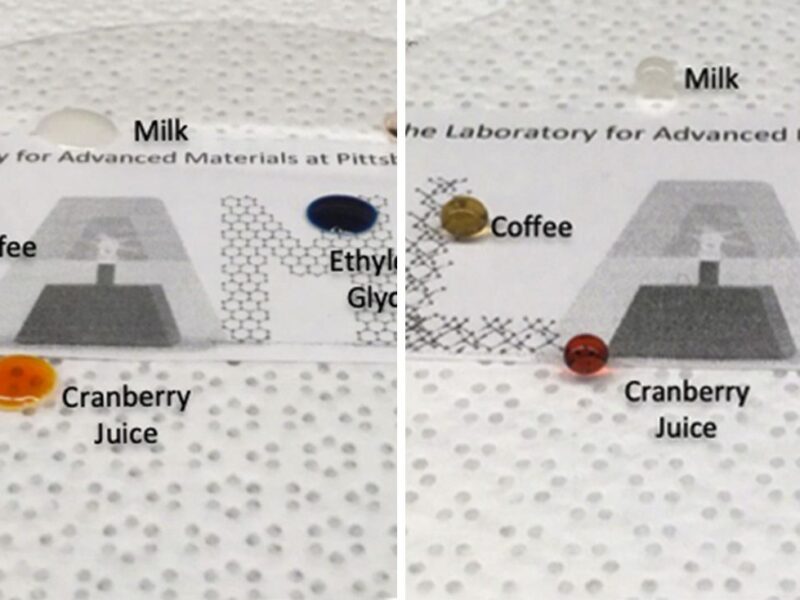
Bio-inspired nanostructured glass is anti-fogging, liquid resistant
The researchers took inspiration from the extraordinary transparent wings of the glasswing butterfly and used machine learning to test out different nanostructure design options that would offer similar benefits.
Natural surfaces like lotus leaves, moth eyes and butterfly wings display omniphobic properties which render them self-cleaning, bacteria resistant and water repellant – adaptations for survival that evolved over millions of years. Researchers have long sought inspiration from nature to replicate these properties in a synthetic material, and even to improve upon them. While the team could not rely on evolution to achieve these results, they instead used machine learning for the final product.
“When you create something like this, you don’t start with a lot of data, and each trial takes a great deal of time. We used machine learning to suggest variables to change, and it took us fewer tries to create this material as a result,” explains Paul Leu, associate professor of industrial engineering at the Swanson School, whose lab conducted the research.
“Machine learning and AI strategies are only relevant when they solve real problems; we are excited to be able to collaborate with the University of Pittsburgh to bring the power of Bayesian active learning to a new application,” said Bolong Cheng, PhD, research engineer at SigOpt.
The results published in the journal Materials Horizons under the title “Creating glasswing butterfly-inspired durable antifogging superomniphobic supertransmissive, superclear nanostructured glass through Bayesian learning and optimization” is a glass that is 99.5% transparent, when random nanostructures (smaller than the wavelengths of visible light) are designed on both sides.

on a non-treated glass surface (left) and a structured glass
surface (right).
Courtesy of professor Paul Leu/University of Pittsburgh.
This high transparency can reduce the brightness and power demands on displays that could, for example, extend battery life. The glass is also antireflective across higher angles, improving viewing from different directions, with a low haze less than 0.1%. The glass is so liquid-repellent that it even resists condensation droplets smaller than 2μm, they roll off the surface, making it naturally antifogging.
What’s more, the surface can restore its liquid-repellency after physical damage through heating for 15 minutes. The researchers are now busy developing a commercially viable process to manufacture the new glass.
University of Pittsburgh – www.pitt.edu
Related articles:
Bio-inspired antireflection film makes displays more readable under the sun
Flower-inspired texture to boost photovoltaics
 If you enjoyed this article, you will like the following ones: don't miss them by subscribing to :
eeNews on Google News
If you enjoyed this article, you will like the following ones: don't miss them by subscribing to :
eeNews on Google News



